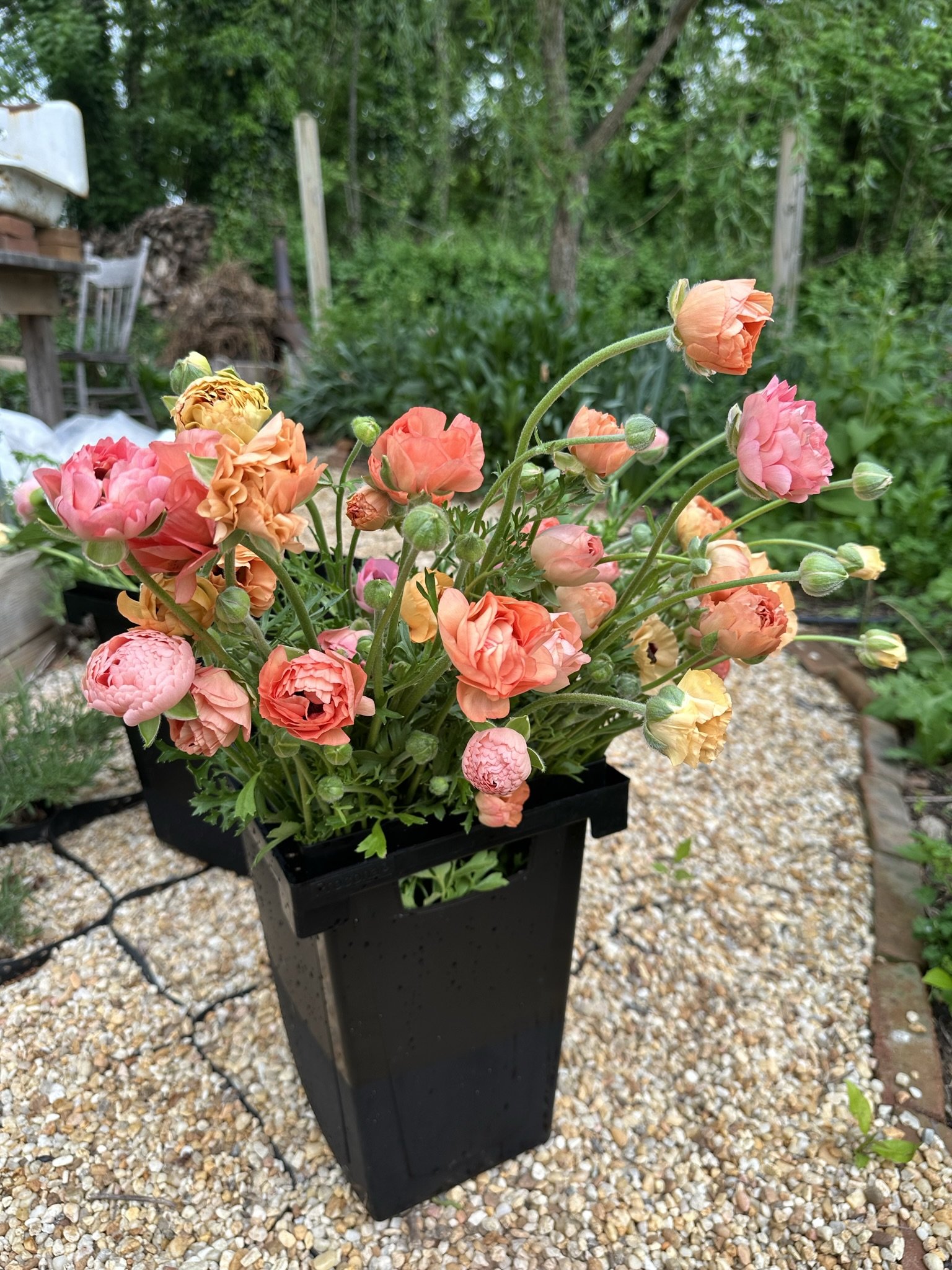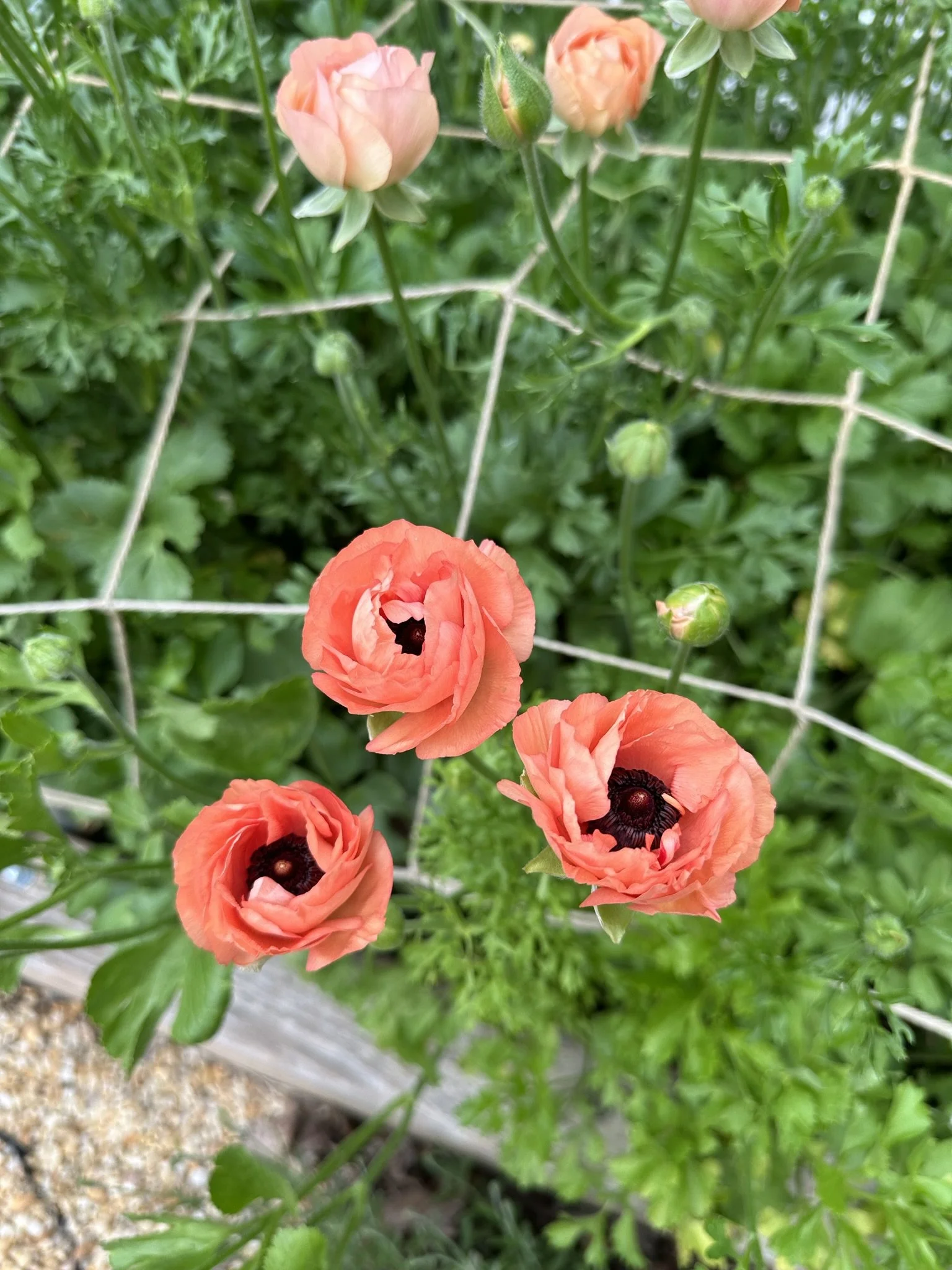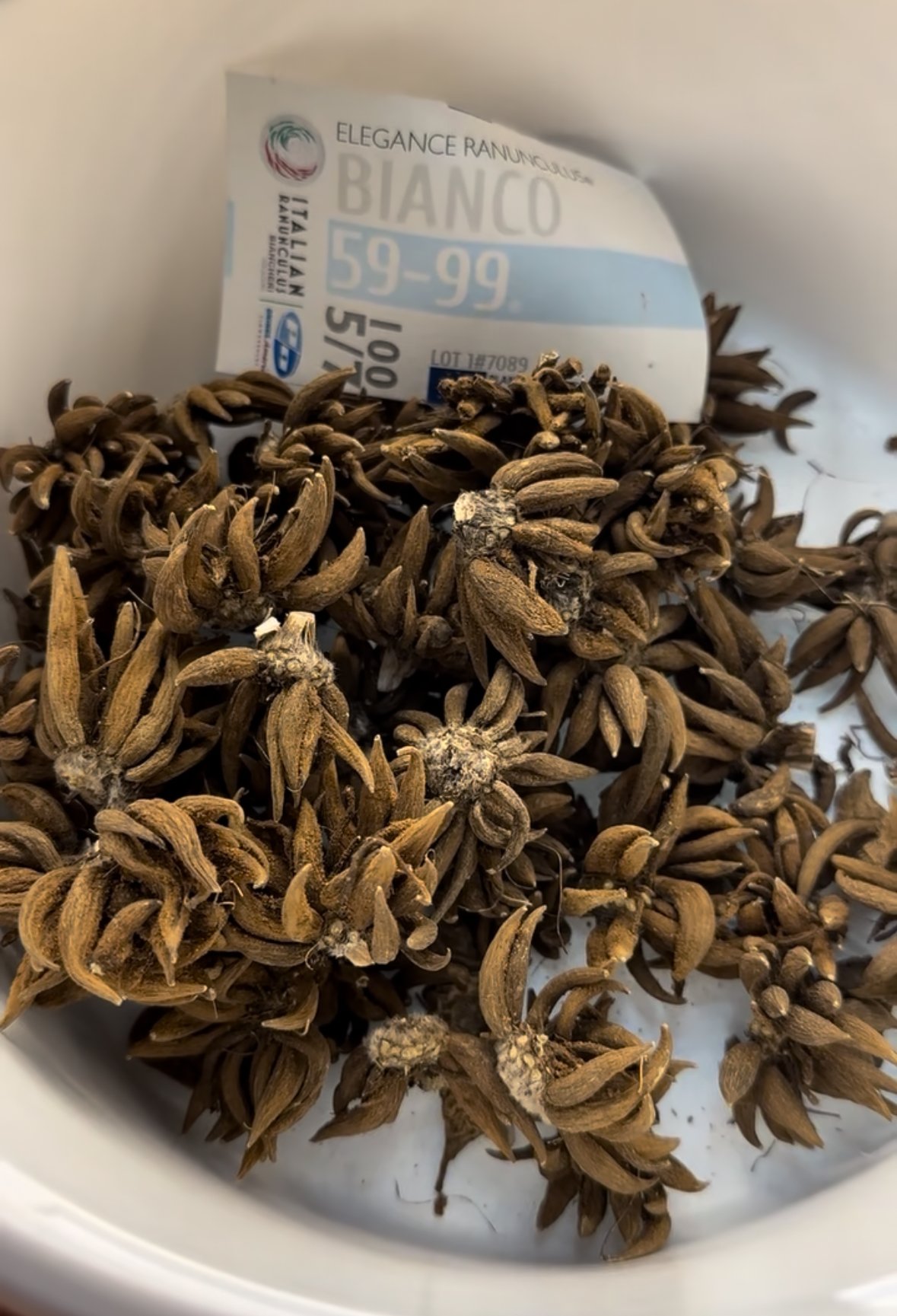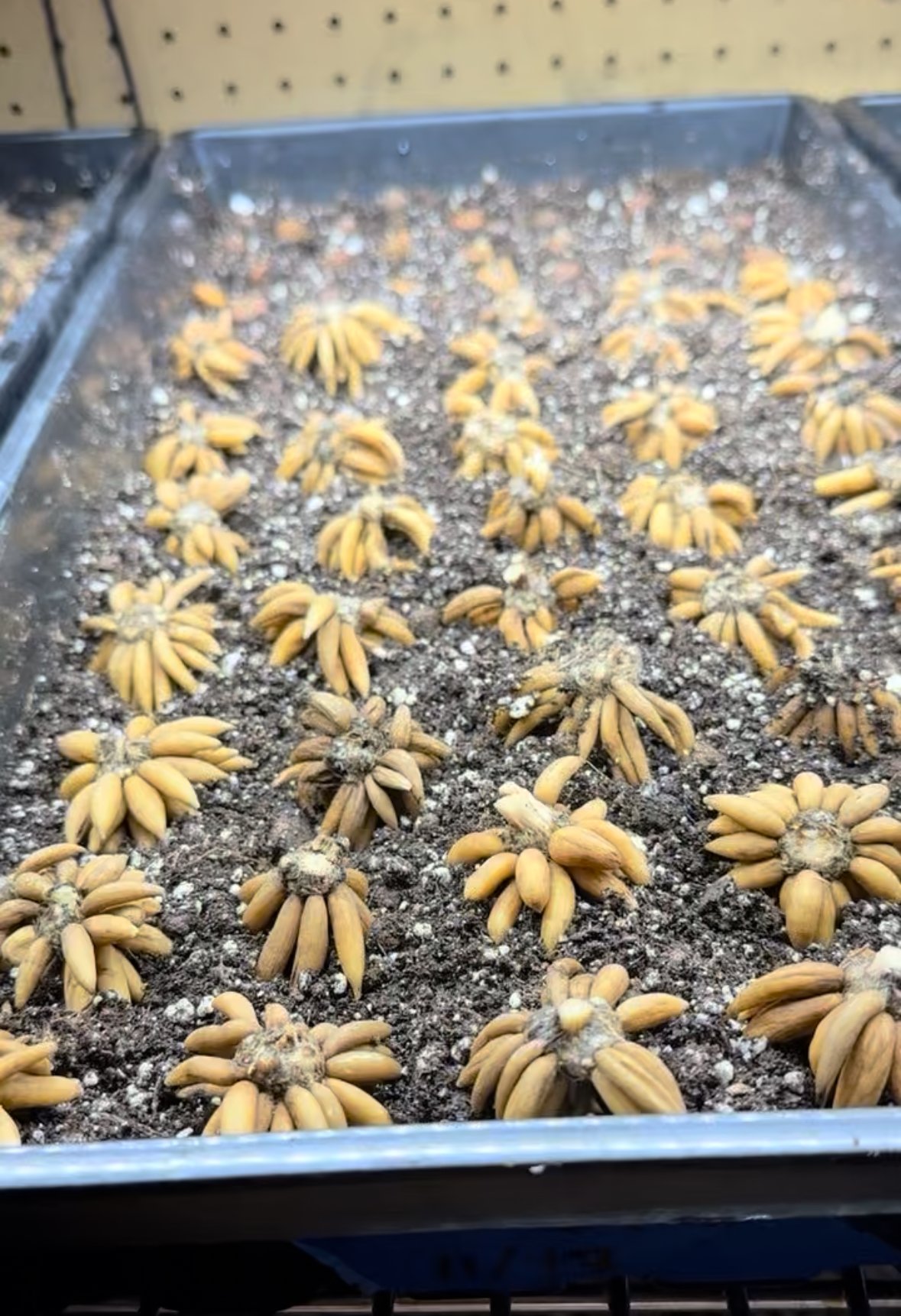 Image 1 of 4
Image 1 of 4

 Image 2 of 4
Image 2 of 4

 Image 3 of 4
Image 3 of 4

 Image 4 of 4
Image 4 of 4





Ranunculus Tecolote Salmon
Pack size 10 corms
Fall Shipping (late September - late October)
Tecolote Salmon Ranunculus
Tecolote Salmon is a celebration of vibrant, warm hues—its salmon-pink petals unfolding like soft flames in the garden. Sturdy stems carry these bold, beautiful blooms with an effortless grace, making them perfect for both borders and bouquets.
Plant the corms in well-drained soil, in full sun, and enjoy a burst of color that brings summer’s glow into your garden and home.
How to Plant & Grow Ranunculus
Quick Planting Guide
Planting time: Fall in mild climates (Zones 7–10), or early spring after frost in colder climates
Soil: Loose, fertile, well-draining
Depth & spacing: 2–3" deep, 6–9" apart
Light: Full sun (with light afternoon shade in hot regions)
Bloom: 12–16 weeks after planting (fall planting = late winter–spring blooms; spring planting = late spring–early summer blooms)
Step-by-Step Planting Instructions
1. Prepare the corms
Ranunculus grow from claw-shaped corms.
Soak corms in cool water for 3–4 hours before planting (no longer than 6).
Plant with the “claw” side down. If unsure, lay corms on their side and shoots will find their way up.
2. Pre-sprouting (optional but recommended)
Pre-sprouting gives stronger plants and more reliable blooms.
After soaking, place corms in a shallow tray with barely damp vermiculite, peat moss, or potting mix.
Store in a cool, dark place (40–50°F / 4–10°C) for 1–2 weeks.
When little white rootlets appear, transplant into beds or pots.
3. Prepare the planting site
Choose a sunny spot with excellent drainage.
Loosen soil 8–10" deep and enrich with compost.
If soil is heavy, add grit or sand to improve drainage — ranunculus will rot in soggy soil.
Raised beds and containers are ideal.
4. Plant the corms
Plant 2–3" deep, 6–9" apart.
Water well after planting to settle the soil.
In cold climates, protect young shoots from frost with row cover or frost cloth.
5. Growing on & care
Watering: Keep soil consistently moist during active growth but never waterlogged.
Feeding: Once foliage appears, feed every 2–3 weeks with a balanced liquid fertilizer or organic flower feed.
Mulching: Apply a light mulch to regulate moisture and soil temperature.
6. Bloom time & harvest
Ranunculus bloom about 12–16 weeks after planting.
Cut stems when buds are colored and soft but not fully open — this gives the best vase life.
With regular cutting, plants continue to produce new blooms.
7. After flowering
In mild climates, corms can sometimes survive in the ground, but they rarely re-bloom well the next year.
For best results, lift corms after foliage dies back, dry them thoroughly, and store in paper bags or mesh sacks in a cool, dry place until replanting.
Tips for Success
Stagger plantings every 2 weeks for a longer bloom season.
Protect from slugs, snails, and late frosts when shoots are young.
Ranunculus are a florist favorite for their layered, rose-like blooms and long vase life (7–10 days or more).
Pair beautifully with anemones, tulips, and sweet peas.
Pack size 10 corms
Fall Shipping (late September - late October)
Tecolote Salmon Ranunculus
Tecolote Salmon is a celebration of vibrant, warm hues—its salmon-pink petals unfolding like soft flames in the garden. Sturdy stems carry these bold, beautiful blooms with an effortless grace, making them perfect for both borders and bouquets.
Plant the corms in well-drained soil, in full sun, and enjoy a burst of color that brings summer’s glow into your garden and home.
How to Plant & Grow Ranunculus
Quick Planting Guide
Planting time: Fall in mild climates (Zones 7–10), or early spring after frost in colder climates
Soil: Loose, fertile, well-draining
Depth & spacing: 2–3" deep, 6–9" apart
Light: Full sun (with light afternoon shade in hot regions)
Bloom: 12–16 weeks after planting (fall planting = late winter–spring blooms; spring planting = late spring–early summer blooms)
Step-by-Step Planting Instructions
1. Prepare the corms
Ranunculus grow from claw-shaped corms.
Soak corms in cool water for 3–4 hours before planting (no longer than 6).
Plant with the “claw” side down. If unsure, lay corms on their side and shoots will find their way up.
2. Pre-sprouting (optional but recommended)
Pre-sprouting gives stronger plants and more reliable blooms.
After soaking, place corms in a shallow tray with barely damp vermiculite, peat moss, or potting mix.
Store in a cool, dark place (40–50°F / 4–10°C) for 1–2 weeks.
When little white rootlets appear, transplant into beds or pots.
3. Prepare the planting site
Choose a sunny spot with excellent drainage.
Loosen soil 8–10" deep and enrich with compost.
If soil is heavy, add grit or sand to improve drainage — ranunculus will rot in soggy soil.
Raised beds and containers are ideal.
4. Plant the corms
Plant 2–3" deep, 6–9" apart.
Water well after planting to settle the soil.
In cold climates, protect young shoots from frost with row cover or frost cloth.
5. Growing on & care
Watering: Keep soil consistently moist during active growth but never waterlogged.
Feeding: Once foliage appears, feed every 2–3 weeks with a balanced liquid fertilizer or organic flower feed.
Mulching: Apply a light mulch to regulate moisture and soil temperature.
6. Bloom time & harvest
Ranunculus bloom about 12–16 weeks after planting.
Cut stems when buds are colored and soft but not fully open — this gives the best vase life.
With regular cutting, plants continue to produce new blooms.
7. After flowering
In mild climates, corms can sometimes survive in the ground, but they rarely re-bloom well the next year.
For best results, lift corms after foliage dies back, dry them thoroughly, and store in paper bags or mesh sacks in a cool, dry place until replanting.
Tips for Success
Stagger plantings every 2 weeks for a longer bloom season.
Protect from slugs, snails, and late frosts when shoots are young.
Ranunculus are a florist favorite for their layered, rose-like blooms and long vase life (7–10 days or more).
Pair beautifully with anemones, tulips, and sweet peas.